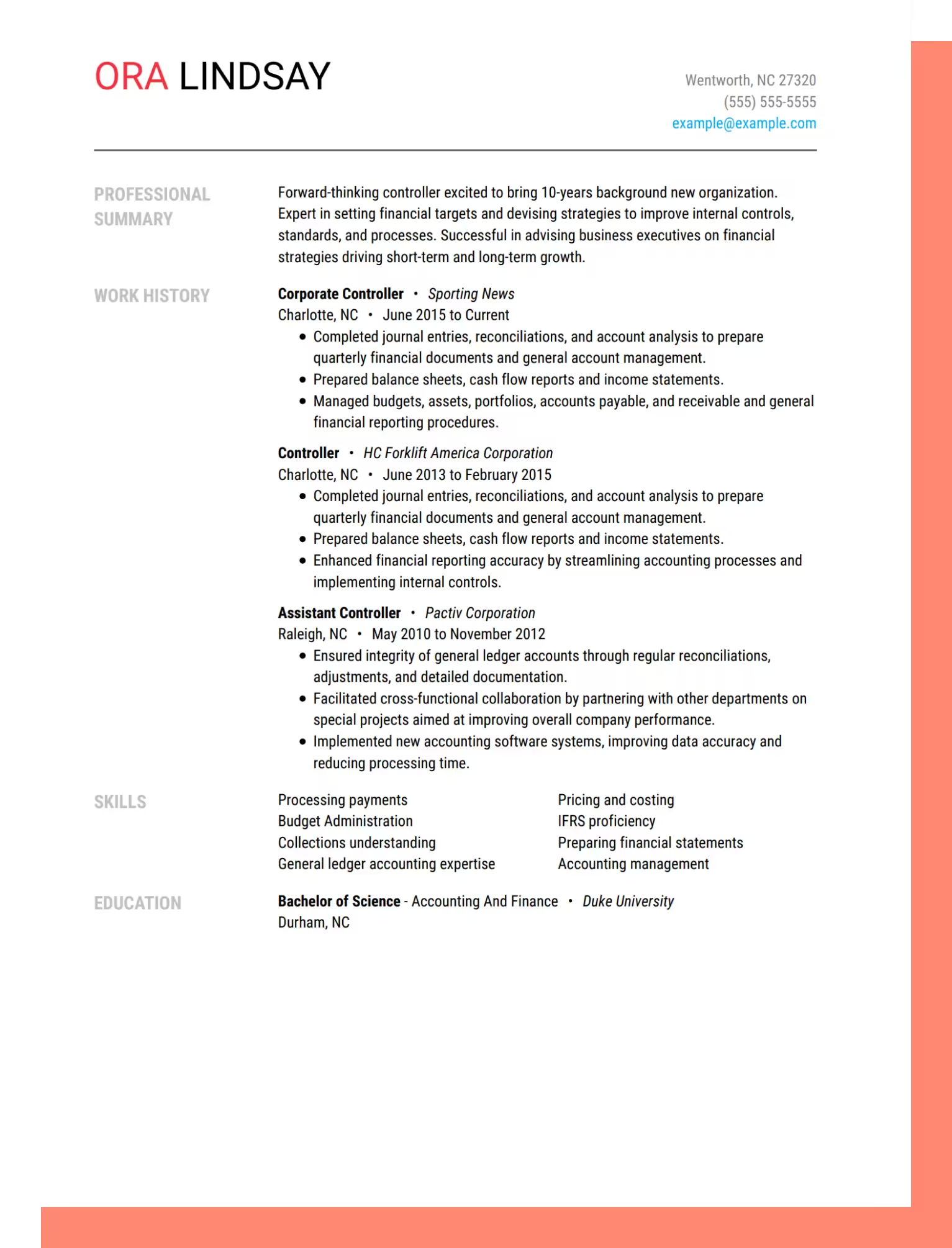Museum Resume Examples & Templates

- 30% higher chance of getting a job‡
- 42% higher response rate from recruiters‡
Our customers have been hired at:*Foot Note
Museum jobs play a vital role in preserving cultural heritage, facilitating education and fostering a deeper understanding of history, art, science and culture. Museum professionals ensure that collections are cared for, exhibitions are thoughtfully curated and visitors are engaged.
Discover how to write a resume that impresses hiring managers and browse expertly crafted museum resume examples to start building your job-winning resume today.
Resume examples for top museum jobs
Our customer reviews say it best
Our resume builder makes it easy to craft an impressive, ATS-friendly resume in just minutes.
- Free professionally designed templates.
- Expert suggestions for every section of your resume.
- Start a resume from scratch or edit your existing resume.
FAQ
How should I format my museum resume?
When formatting your museum resume, it is important to use a professional resume font and a clean, well-organized layout. Select a resume format that suits your experience level and career goals.
An entry-level visitor services coordinator might use a functional resume format to focus on their job-relevant skills, such as customer service and calendar management.
On the other hand, an experienced museum curator should use the chronological resume format to highlight their industry background and career progression.
We recommend exploring our expertly crafted resume examples to see what a professional resume should look like for different job titles and career stages.
What skills should I include on my museum resume?
When crafting your museum resume, include hard skills and soft skills relevant to the specific job you are applying for.
Here are a few skills that you might choose to include on your museum resume:
- Curatorial skills: Collection management, exhibit development and design, artifact handling and research and documentation.
- Educational skills: Developing and delivering educational programs, leading tours and workshops for diverse audiences and creating educational materials and resources.
- Administrative skills: Project management, budgeting, financial management, grant writing, fundraising, database management and record-keeping.
- Communication skills: Verbal communication, public speaking and presentation skills and interpersonal skills for working with colleagues, visitors and stakeholders.
- Technical skills: Proficiency in museum software and database systems (e.g., TMS, PastPerfect), knowledge of exhibition design software and familiarity with conservation techniques and equipment.
Create a dedicated section on your resume to list your job-relevant skills using bullet points. See additional resume skills that hiring managers want to see.
How can I showcase my experience in library and museum work on my resume?
Showcasing your experience in museum work on your resume involves highlighting specific responsibilities, skills and measurable accomplishments relevant to the field. Here are a few tips to help you get started:
- Quantify achievements: Whenever possible, quantify your accomplishments to demonstrate the impact of your work. For example, mention the number of exhibits you curated, the size of collections you managed or the increase in visitor engagement you achieved.
- Use action verbs: Begin each bullet point with a strong action verb to convey your accomplishments and responsibilities effectively. For example, instead of saying, “Responsible for managing collections,” you could say, “Managed and cataloged a diverse collection of artifacts.”
- Demonstrate adaptability: Showcase your ability to adapt to different museum environments or challenges. If you’ve worked in museums of different sizes, specialties or cultural contexts, highlight how you successfully navigated these differences and contributed to each organization.
We recommend using our Resume Builder to craft your museum resume. You’ll get expertly written content suggestions to include in the work history section of your resume.
Should I include a cover letter when applying for museum positions?
Yes, including a cover letter when applying for museum positions is highly recommended. A well-crafted cover letter allows you to introduce yourself to the hiring manager, highlight your qualifications and relevant experiences and express your enthusiasm for the position and the museum.
A cover letter is a chance to demonstrate your writing skills and communication abilities, which are important in many museum roles, particularly those involving educational programming, exhibit development or public outreach.
You can use our Cover Letter Generator to generate a cover letter using your resume or build a new cover letter from scratch with the help of expert content suggestions. We recommend exploring our museum cover letter examples for additional inspiration and tips from career advice experts.
What certifications should I include on my museum resume?
Including relevant certifications on your museum resume can demonstrate your expertise, commitment to professional development and qualifications for specific roles within the museum field.
Here are some certifications you may consider including, depending on your background and the requirements of the positions you’re applying for:
- Certified Institutional Protection Manager (CIPM)
- Certified Archivist (CA)
- Certified Collection Manager (CCM)
- Certified Interpretive Guide (CIG)
- Certified Digital Archivist (CDA)
- Certified Interpretive Trainer (CIT)
Make sure to list certifications along with the issuing organization and any relevant dates or expiration information.
See our professional resume templates for examples of how to list certifications on your resume.
What is a professional summary for a museum resume?
A professional summary for a museum resume should provide a concise overview of your background, skills and accomplishments in past museum roles.
Here’s an example of an effective resume summary for a museum resume:
“Dedicated museum professional with over five years of experience in curatorial work, exhibit development and collections management. Skilled in researching, preserving and interpreting cultural artifacts and artworks. Proven track record of curating engaging exhibitions, developing educational programs and fostering community engagement. Passionate about preserving cultural heritage and facilitating meaningful visitor experiences.”
This summary effectively communicates key areas of expertise and passion for museum work. When crafting your own professional summary, keep it concise and impactful, aiming to capture the attention of hiring managers and make them eager to learn more about your qualifications.

